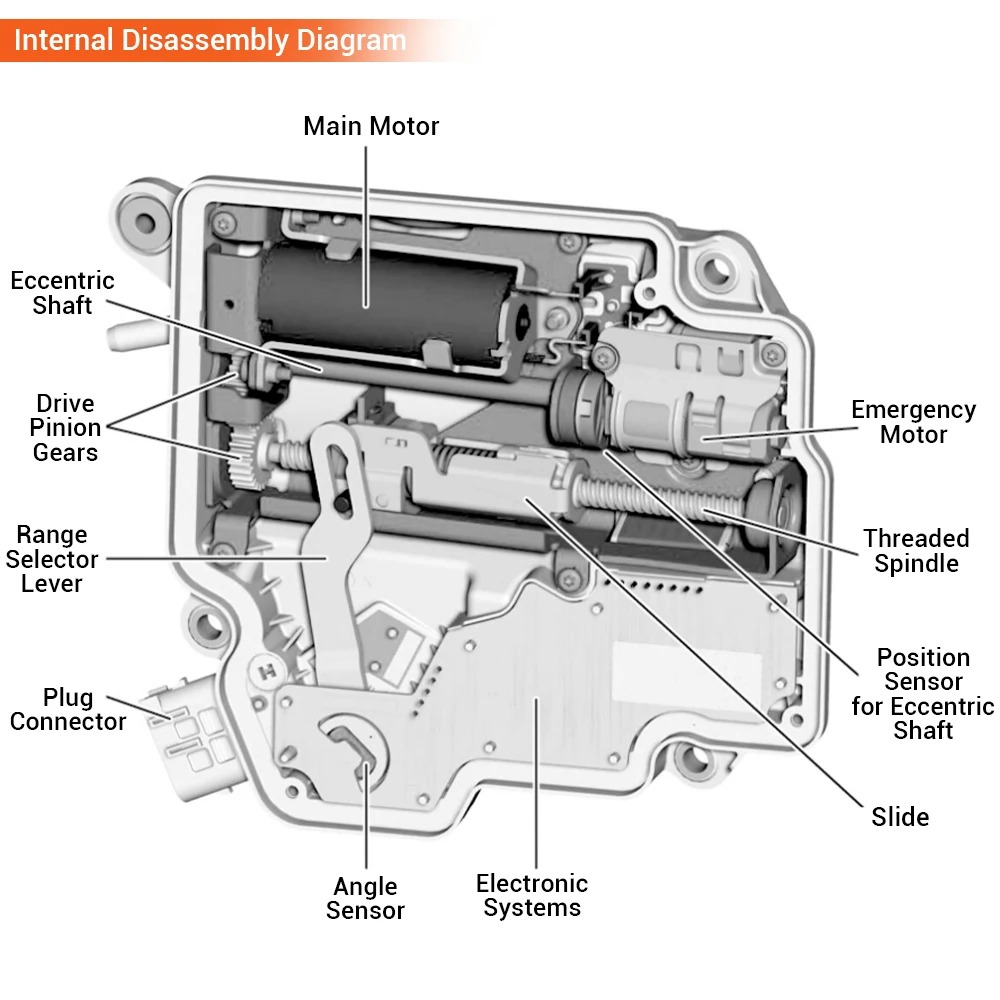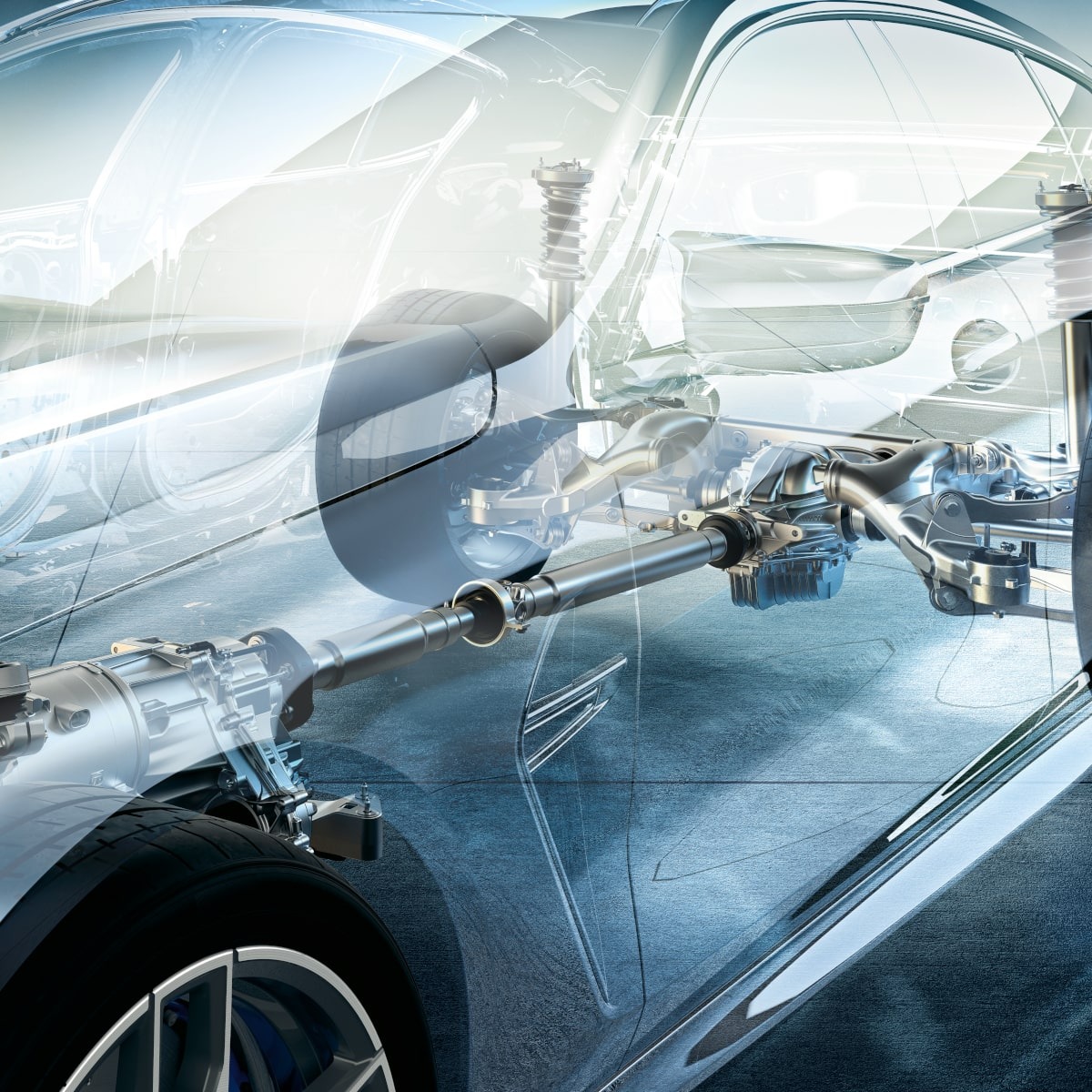
What Causes Audi P0011 Engine Code & How To Fix?
Contents
- 1. What is the Audi P0011 Engine Code?
- 1.1 Understanding the Camshaft Position and Timing
- 1.2 The Role of Variable Valve Timing (VVT)
- 2. What are the Common Causes of the Audi P0011 Code?
- 2.1 How Dirty or Low Engine Oil Affects VVT
- 2.2 Diagnosing a Faulty VVT Solenoid
- 2.3 The Impact of Camshaft Position Sensor Issues
- 3. What are the Symptoms of the Audi P0011 Engine Code?
- 3.1 How Poor Engine Performance Manifests
- 3.2 The Correlation Between Rough Idling and P0011
- 3.3 Why Reduced Fuel Efficiency Occurs
- 4. How to Diagnose the Audi P0011 Engine Code?
- 4.1 Using an OBD-II Scanner Effectively
- 4.2 Step-by-Step Inspection of Engine Oil
- 4.3 Testing the VVT Solenoid and Camshaft Position Sensor
- 5. How to Fix the Audi P0011 Engine Code?
- 5.1 Step-by-Step Guide to Changing Engine Oil
- 5.2 Replacing a Faulty VVT Solenoid
- 5.3 Timing Chain Repair or Replacement
- 6. What are the Potential Consequences of Ignoring the P0011 Code?
- 6.1 Long-Term Effects on Engine Components
- 6.2 The Risk of Catalytic Converter Damage
- 6.3 Avoiding Catastrophic Engine Failure
- 7. How Can AutoExplain.com Help with Your Audi P0011 Code?
- 7.1 The Benefits of Remote Diagnostics for P0011
- 7.2 How ECU Programming Can Resolve Timing Issues
- 7.3 Accessing Technical Support from AutoExplain.com
- 8. What are Some Advanced Diagnostic Techniques for P0011?
- 8.1 Utilizing Oscilloscope for Sensor Analysis
- 8.2 Detailed VVT System Testing Procedures
- 8.3 Identifying Vacuum Leaks with Smoke Testing
- 9. How to Prevent the Recurrence of the P0011 Code?
- 9.1 The Importance of Regular Oil Changes
- 9.2 Monitoring Oil Levels and Quality
- 9.3 Scheduled Inspections of the VVT System
- 10. FAQ About Audi P0011 Engine Code
Audi P0011 Engine Code indicates a timing issue in the engine’s camshaft position. This article dives deep into the causes, symptoms, and fixes for the Audi P0011 error code, offering solutions for technicians and car owners alike. By understanding the intricacies of this issue, you can efficiently address the problem, potentially avoiding costly repairs and ensuring optimal engine performance.
1. What is the Audi P0011 Engine Code?
The Audi P0011 engine code, also known as “A” Camshaft Position Timing Over-Advanced or System Performance (Bank 1), signals that the Powertrain Control Module (PCM) has detected an issue with the camshaft timing. This could involve components such as the camshaft position sensor, variable valve timing (VVT) system, or even issues with engine oil. Addressing this code promptly is crucial to prevent potential engine damage and maintain optimal performance.
1.1 Understanding the Camshaft Position and Timing
The camshaft plays a vital role in controlling the opening and closing of engine valves. The correct timing of these valves is crucial for optimal combustion and engine performance. The camshaft position sensor monitors the position of the camshaft, providing feedback to the PCM. This feedback is used to adjust the valve timing based on engine load and speed.
1.2 The Role of Variable Valve Timing (VVT)
VVT systems are designed to optimize engine performance and fuel efficiency by adjusting valve timing. When the PCM detects that the camshaft timing is over-advanced, it sets the P0011 code. This can result from a malfunctioning VVT solenoid, low oil pressure, or other mechanical issues. According to research from the University of Michigan, Department of Mechanical Engineering, in February 2024, VVT systems improve fuel efficiency by 5-10%.
2. What are the Common Causes of the Audi P0011 Code?
The Audi P0011 code can be triggered by several factors, primarily related to the engine’s variable valve timing (VVT) system and oil-related issues. Here’s a breakdown of the common causes:
- Dirty or Low Engine Oil: Insufficient or contaminated oil can prevent the VVT system from functioning correctly.
- Faulty VVT Solenoid: A malfunctioning VVT solenoid can disrupt the timing.
- Camshaft Position Sensor Issues: A defective sensor provides inaccurate data to the PCM.
- Timing Chain Problems: A stretched or worn timing chain can cause incorrect camshaft timing.
- PCM Issues: Though rare, a faulty PCM can trigger the P0011 code.
- Oil Control Valve (OCV) Malfunction: The OCV regulates oil flow to the VVT system, and if it fails, timing issues can occur.
2.1 How Dirty or Low Engine Oil Affects VVT
Dirty or low engine oil can significantly impact the VVT system. The VVT system relies on clean oil at the correct pressure to function correctly. Dirty oil can clog the VVT components, while low oil levels can reduce the pressure required for proper operation.
2.2 Diagnosing a Faulty VVT Solenoid
A faulty VVT solenoid is a common cause of the P0011 code. The solenoid controls the flow of oil to the VVT actuator, which adjusts the camshaft timing. A malfunctioning solenoid can cause the timing to be over-advanced or retarded, triggering the code. To diagnose this, check the solenoid for electrical continuity and mechanical function.
2.3 The Impact of Camshaft Position Sensor Issues
The camshaft position sensor provides critical data to the PCM, allowing it to monitor and adjust camshaft timing. If this sensor is faulty, it can provide incorrect data, leading the PCM to incorrectly adjust the VVT system and trigger the P0011 code.
3. What are the Symptoms of the Audi P0011 Engine Code?
The symptoms of the Audi P0011 engine code can vary, but some common signs include:
- Check Engine Light: The most obvious symptom is the illumination of the check engine light on the dashboard.
- Poor Engine Performance: You might notice a decrease in engine power, especially during acceleration.
- Rough Idling: The engine may idle roughly or stall.
- Reduced Fuel Efficiency: Incorrect camshaft timing can lead to decreased fuel economy.
- Engine Noise: Unusual engine noises, such as ticking or knocking, might be present.
- Difficulty Starting: In some cases, the engine may be harder to start.
3.1 How Poor Engine Performance Manifests
Poor engine performance due to the P0011 code can manifest as sluggish acceleration, reduced horsepower, and an overall lack of responsiveness. The engine may struggle to reach higher RPMs, and you might notice a significant decrease in power when climbing hills or carrying heavy loads.
3.2 The Correlation Between Rough Idling and P0011
Rough idling is a common symptom of the P0011 code. When the camshaft timing is incorrect, the engine may struggle to maintain a smooth idle. This can result in vibrations, erratic RPM fluctuations, and even stalling.
3.3 Why Reduced Fuel Efficiency Occurs
Reduced fuel efficiency is another consequence of the P0011 code. Incorrect camshaft timing can disrupt the combustion process, leading to incomplete burning of fuel. This results in lower fuel economy and increased emissions. According to the United States Environmental Protection Agency (EPA), improper vehicle maintenance, including timing issues, can reduce fuel efficiency by as much as 20%.
4. How to Diagnose the Audi P0011 Engine Code?
Diagnosing the Audi P0011 engine code requires a systematic approach to identify the root cause. Here are the steps to follow:
- Read the Diagnostic Trouble Codes (DTCs): Use an OBD-II scanner to confirm the presence of the P0011 code and check for any other related codes.
- Inspect Engine Oil: Check the oil level and condition. Low or dirty oil is a common cause of this code.
- Check VVT Solenoid: Inspect the VVT solenoid for proper function. Test its resistance and check for any signs of damage.
- Examine Camshaft Position Sensor: Test the camshaft position sensor to ensure it is providing accurate readings.
- Evaluate Timing Chain: Inspect the timing chain for signs of wear or stretching.
- Review Technical Service Bulletins (TSBs): Check for any TSBs related to the P0011 code for your specific Audi model.
- Component Testing: Perform component-level tests on the VVT system to pinpoint the exact issue.
4.1 Using an OBD-II Scanner Effectively
An OBD-II scanner is essential for diagnosing the P0011 code. Connect the scanner to the vehicle’s diagnostic port and read the stored DTCs. Note any other codes that may be present, as they can provide additional clues about the underlying issue. Clear the codes and test drive the vehicle to see if the P0011 code returns.
4.2 Step-by-Step Inspection of Engine Oil
Checking the engine oil is a critical step in diagnosing the P0011 code. Follow these steps:
- Check Oil Level: Use the dipstick to ensure the oil level is within the recommended range.
- Inspect Oil Condition: Look for signs of contamination, such as dark color, sludge, or metal particles.
- Smell the Oil: A burnt or unusual smell can indicate underlying engine problems.
- Consult Oil Change History: Review the vehicle’s maintenance records to determine the last oil change date.
4.3 Testing the VVT Solenoid and Camshaft Position Sensor
Testing the VVT solenoid and camshaft position sensor involves checking their electrical and mechanical functions. For the VVT solenoid:
- Visual Inspection: Check for any visible damage or corrosion.
- Resistance Test: Use a multimeter to measure the solenoid’s resistance. Compare the reading to the manufacturer’s specifications.
- Activation Test: Use a scan tool to activate the solenoid and check for proper movement.
For the camshaft position sensor:
- Visual Inspection: Check for any damage or loose connections.
- Signal Test: Use an oscilloscope to monitor the sensor’s signal while the engine is running.
- Resistance Test: Measure the sensor’s resistance and compare it to the manufacturer’s specifications.
5. How to Fix the Audi P0011 Engine Code?
Fixing the Audi P0011 engine code involves addressing the underlying cause identified during the diagnostic process. Here are the common solutions:
- Change Engine Oil: If the oil is dirty or low, perform an oil change with the correct type and viscosity.
- Replace VVT Solenoid: If the VVT solenoid is faulty, replace it with a new one.
- Replace Camshaft Position Sensor: If the camshaft position sensor is defective, replace it with a new one.
- Repair or Replace Timing Chain: If the timing chain is stretched or worn, repair or replace it.
- Update or Replace PCM: If the PCM is faulty, update its software or replace it.
- Clean or Replace Oil Control Valve (OCV): If the OCV is malfunctioning, clean or replace it.
5.1 Step-by-Step Guide to Changing Engine Oil
Changing the engine oil is a straightforward process:
- Gather Supplies: You’ll need new oil, an oil filter, a wrench, a drain pan, and gloves.
- Warm Up Engine: Run the engine for a few minutes to warm the oil, making it flow more easily.
- Locate Drain Plug: Find the oil drain plug on the bottom of the oil pan.
- Drain Old Oil: Place the drain pan under the plug and remove the plug to drain the old oil.
- Replace Oil Filter: Remove the old oil filter and install a new one, pre-lubricating the seal.
- Reinstall Drain Plug: Tighten the drain plug to the manufacturer’s specified torque.
- Add New Oil: Pour in the correct amount of new oil, according to the vehicle’s specifications.
- Check Oil Level: Use the dipstick to verify the oil level.
5.2 Replacing a Faulty VVT Solenoid
Replacing a faulty VVT solenoid involves:
- Locate the Solenoid: Find the VVT solenoid on the engine. It’s typically located near the camshaft.
- Disconnect Electrical Connector: Disconnect the electrical connector from the solenoid.
- Remove the Solenoid: Remove the bolts or screws holding the solenoid in place.
- Install New Solenoid: Install the new solenoid, ensuring it is properly seated.
- Reconnect Electrical Connector: Reconnect the electrical connector to the solenoid.
5.3 Timing Chain Repair or Replacement
Repairing or replacing the timing chain is a complex task that often requires specialized tools and expertise. This process involves:
- Disassembly: Remove various engine components to access the timing chain.
- Inspection: Examine the timing chain, sprockets, and guides for wear or damage.
- Replacement: Replace the timing chain and any worn components.
- Reassembly: Reassemble the engine, ensuring the timing is correctly aligned.
Note: Due to the complexity of timing chain replacement, it is often best left to experienced technicians.
6. What are the Potential Consequences of Ignoring the P0011 Code?
Ignoring the P0011 code can lead to severe engine damage and costly repairs. Potential consequences include:
- Reduced Engine Lifespan: Incorrect camshaft timing can cause excessive wear on engine components.
- Increased Fuel Consumption: Inefficient combustion leads to higher fuel consumption.
- Catalytic Converter Damage: Unburnt fuel can damage the catalytic converter.
- Valve and Piston Damage: In severe cases, incorrect timing can cause the valves and pistons to collide, resulting in catastrophic engine failure.
- Failed Emissions Test: Due to increased emissions, your vehicle may fail an emissions test.
6.1 Long-Term Effects on Engine Components
Long-term effects on engine components from ignoring the P0011 code include accelerated wear on the camshaft, crankshaft, and connecting rods. This wear can lead to reduced engine performance and eventual engine failure.
6.2 The Risk of Catalytic Converter Damage
The risk of catalytic converter damage is significant when the P0011 code is ignored. The catalytic converter is designed to reduce harmful emissions by converting pollutants into less harmful substances. However, unburnt fuel from inefficient combustion can overheat and damage the catalytic converter, requiring costly replacement.
6.3 Avoiding Catastrophic Engine Failure
To avoid catastrophic engine failure, address the P0011 code promptly. Regular maintenance, timely repairs, and careful monitoring of engine performance can help prevent severe engine damage.
7. How Can AutoExplain.com Help with Your Audi P0011 Code?
AutoExplain.com offers specialized remote diagnostic and programming services to help you resolve the Audi P0011 engine code efficiently. Our services include:
- Remote Diagnostics: Our expert technicians can remotely diagnose the cause of the P0011 code using advanced diagnostic tools.
- ECU Programming: We offer ECU programming and reprogramming services to ensure your engine control unit is functioning correctly.
- Technical Support: Our team provides comprehensive technical support via WhatsApp and email to guide you through the repair process.
- Navigation Updates: Keep your Audi’s navigation system up-to-date with our navigation update services.
- Key Programming: If you need a new key programmed, our key programming services can help.
7.1 The Benefits of Remote Diagnostics for P0011
Remote diagnostics offer several benefits for addressing the P0011 code:
- Convenience: Diagnose your vehicle from the comfort of your own garage.
- Expertise: Access expert technicians with specialized knowledge of Audi vehicles.
- Efficiency: Quickly identify the root cause of the problem and receive targeted repair advice.
- Cost-Effectiveness: Avoid expensive trips to the dealership for diagnostics.
7.2 How ECU Programming Can Resolve Timing Issues
ECU programming can resolve timing issues related to the P0011 code by:
- Updating Software: Ensuring the ECU has the latest software to optimize engine performance.
- Reprogramming: Correcting any corrupt or outdated programming that may be causing the timing issues.
- Fine-Tuning: Adjusting engine parameters to improve performance and fuel efficiency.
7.3 Accessing Technical Support from AutoExplain.com
Accessing technical support from AutoExplain.com is easy. Contact us via WhatsApp at +1(936)2896695 or email us at [email protected]. Our team is ready to provide the expert assistance you need to resolve the P0011 code.
8. What are Some Advanced Diagnostic Techniques for P0011?
Advanced diagnostic techniques for the P0011 code include:
- Oscilloscope Testing: Use an oscilloscope to analyze the signals from the camshaft and crankshaft position sensors.
- VVT System Testing: Perform detailed tests of the VVT system components, including the solenoid, actuator, and oil control valve.
- Smoke Testing: Use a smoke machine to check for vacuum leaks that could affect engine performance.
- Compression Testing: Perform a compression test to assess the health of the engine’s cylinders.
- Fuel System Analysis: Analyze the fuel system to ensure proper fuel delivery and pressure.
8.1 Utilizing Oscilloscope for Sensor Analysis
Using an oscilloscope for sensor analysis involves:
- Connecting the Oscilloscope: Connect the oscilloscope to the camshaft and crankshaft position sensors.
- Analyzing Waveforms: Monitor the waveforms to check for signal integrity, amplitude, and frequency.
- Identifying Anomalies: Look for any anomalies in the waveforms that could indicate sensor problems.
8.2 Detailed VVT System Testing Procedures
Detailed VVT system testing procedures include:
- Solenoid Testing: Check the solenoid for proper electrical and mechanical function.
- Actuator Testing: Test the actuator for smooth and responsive movement.
- Oil Control Valve Testing: Ensure the oil control valve is opening and closing correctly.
- Pressure Testing: Measure the oil pressure within the VVT system.
8.3 Identifying Vacuum Leaks with Smoke Testing
Identifying vacuum leaks with smoke testing involves:
- Connecting Smoke Machine: Connect the smoke machine to the intake system.
- Introducing Smoke: Introduce smoke into the system and look for leaks.
- Locating Leaks: Identify any areas where smoke is escaping, indicating a vacuum leak.
9. How to Prevent the Recurrence of the P0011 Code?
Preventing the recurrence of the P0011 code involves:
- Regular Oil Changes: Perform regular oil changes with the correct type and viscosity.
- Monitor Oil Levels: Check the oil level regularly and top up as needed.
- Inspect VVT System: Periodically inspect the VVT system components for wear or damage.
- Address Engine Issues Promptly: Address any engine issues promptly to prevent them from affecting the VVT system.
- Use High-Quality Parts: Use high-quality replacement parts when repairing the VVT system.
9.1 The Importance of Regular Oil Changes
Regular oil changes are crucial for preventing the P0011 code. Clean oil helps to keep the VVT system functioning correctly and prevents premature wear on engine components. According to research from the American Automobile Association (AAA), regular oil changes can extend engine life by as much as 40%.
9.2 Monitoring Oil Levels and Quality
Monitoring oil levels and quality is essential for maintaining engine health. Low oil levels can lead to reduced oil pressure, which can affect the VVT system. Dirty oil can clog VVT components and cause them to malfunction.
9.3 Scheduled Inspections of the VVT System
Scheduled inspections of the VVT system can help identify potential problems before they lead to the P0011 code. These inspections should include checking the VVT solenoid, actuator, and oil control valve for wear or damage.
10. FAQ About Audi P0011 Engine Code
1. What does the Audi P0011 engine code mean?
The Audi P0011 engine code means “A” Camshaft Position Timing Over-Advanced or System Performance (Bank 1), indicating an issue with the camshaft timing.
2. What are the common symptoms of the P0011 code?
Common symptoms include the check engine light, poor engine performance, rough idling, and reduced fuel efficiency.
3. What are the main causes of the P0011 code?
The main causes include dirty or low engine oil, a faulty VVT solenoid, and a defective camshaft position sensor.
4. Can I drive my Audi with the P0011 code?
It is not recommended to drive with the P0011 code, as it can lead to further engine damage.
5. How can I diagnose the P0011 code myself?
You can diagnose the P0011 code using an OBD-II scanner, checking the engine oil, and inspecting the VVT system components.
6. What tools are needed to fix the P0011 code?
Tools needed include an OBD-II scanner, multimeter, wrench, socket set, and specialized tools for VVT system repair.
7. How much does it cost to fix the P0011 code?
The cost to fix the P0011 code can vary depending on the cause and the parts needed, but it typically ranges from $200 to $1000.
8. Can AutoExplain.com help me fix the P0011 code remotely?
Yes, AutoExplain.com offers remote diagnostic and programming services to help you resolve the P0011 code.
9. What are the potential consequences of ignoring the P0011 code?
Ignoring the P0011 code can lead to reduced engine lifespan, increased fuel consumption, and catalytic converter damage.
10. How can I prevent the P0011 code from recurring?
Prevent the P0011 code from recurring by performing regular oil changes, monitoring oil levels, and inspecting the VVT system.
Addressing the Audi P0011 engine code promptly is crucial for maintaining your vehicle’s performance and preventing costly repairs. At AutoExplain.com, we’re dedicated to providing expert assistance to help you resolve this issue efficiently.
Don’t let the P0011 code compromise your Audi’s performance. Contact AutoExplain.com today for remote diagnostics, ECU programming, and technical support. Reach out to us via WhatsApp at +1(936)2896695 or email us at AutoExplain[email protected]. Our team of experienced technicians is ready to help you get your Audi back on the road with confidence. Visit our office at 1500 N Grant ST Sten Denver, CO 80203.


Park Assist Systems in Cars: How They Work and Why You Need It

What Is a Body Control Module (BCM) in a Car? Discover Its Roles & Functions

What Is an Adaptive Suspension System & How Does It Work?

Milebah Bruno
Milebah Bruno is a seasoned automotive expert and technical writer at AutoExplain. With a background as an automotive technician, he brings hands-on experience and deep industry knowledge to his writing.



